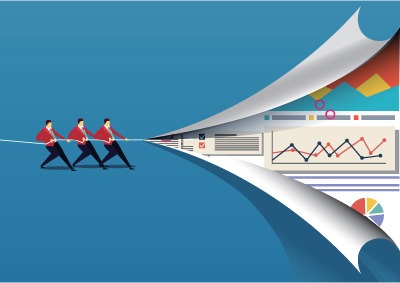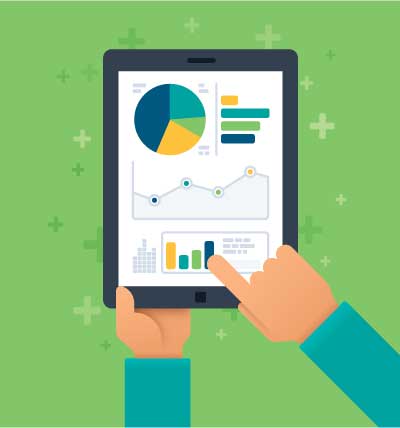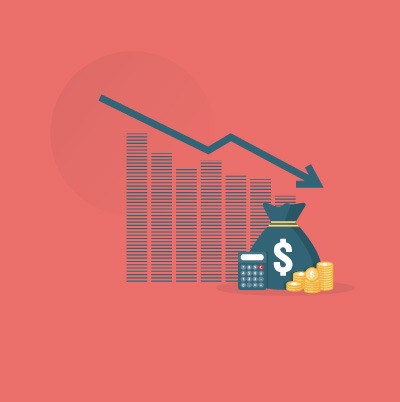What Is Supplier Performance Management?
Supplier performance management (SPM) is a business practice that is used to measure, analyze, and manage the performance of a supplier. Supplier management professionals seek to cut costs, alleviate risks, and drive continuous improvement. Companies use systems to monitor supplier performance levels.

What Is A Supplier Performance Scorecard?
A supplier performance scorecard (supplier scorecard) is a tracking tool used to monitor supplier performance. Supplier scorecards track metrics such as quality, delivery, lead time, price and responsiveness of suppliers over time. Supplier performance professionals use scorecard data to improve supplier relationships.

What Are The Typical Supplier Performance Scorecard Dimensions?
The typical supplier performance scorecard dimensions are financial health (risk of bankruptcy, liquidity, sales, etc), operational performance (quality, lead times, customer services, etc), contract compliance, business processes (defect prevention, inspections, etc), price change year-on-year, negotiator price impact, and overall cost.

Supplier Performance Management Best Practices
All organizations must develop a core competency to quantify and manage their risks effectively in order to be successful over time. When dealing with suppliers, there are substantial risks and potential for disaster in the form of bankruptcy, environmental problems, delivery failure, lack of materials, poor performance, or product defects. Most organizations recognize that these risks exist, but do not take sufficient steps to manage them effectively. While it is true that the level of risk can not be reduced to zero and all disasters can not be prevented, there are still many steps an organization can take to mitigate these supplier risks. One important and cost effective step is to monitor and manage the performance of suppliers periodically. This article will provide an overview of ways that companies can reduce their risks and leverage additional value by effectively managing the performance of their supply base.

Benefits of Supplier Performance Management
By measuring and monitoring supplier performance on an ongoing basis, companies can realize some significant benefits. First, companies can avoid costly and potentially devastating supply disruptions. Second, companies can reduce overall risk to other adverse scenarios like defects, environmental problems, or safety issues with a supplier’s process, materials, or products. Third, companies that implement successful supplier performance management programs will be better able to spot problems early and begin to implement corrective actions before the problem becomes a big headache or hits the bottom line. These benefits are easily quantifiable. If a company knows that there are usually 100 supply disruptions during a year and each disruption costs an average of $100,000 dollars, the monetary benefit of preventing even some of these disruptions would be in the millions each year.

The benefits to a company with an effective supplier performance management program do not only encompass risk mitigation or prevention of problems. There are also positive benefits. One benefit is improved collaboration between suppliers that can lead to better coordination and enables the company and supplier to better meet the company’s business objectives. Another benefit that can arise is increased efficiency and productivity for the organization as it interacts with its suppliers. In addition, a good supplier performance management system can also let suppliers take initiative to perform tasks like updating their information to ensure that everything is current. It can also improve invoice accuracy and reduce expenses. This prevents errors and can make it easier for suppliers to do business with the company.

Supplier Performance Management Program: Goals and Strategy
It is very important that the supplier performance management program has well defined objectives. These objectives should be tied to the overall company strategy and the goals for the organization. Without an alignment between a supplier performance management program and the goals and strategy of the company, the program will be at best ineffective and may result in wasted resources. The goals of the program should also be tied into the overall spending of the company and should consequently reflect the company’s spending and strategic priorities. This means that areas of greater spend and/or greater strategic focus for the company should receive more attention and focus in the program.

In addition to being aligned with overall company strategy, the objectives for the program should also not be vague or nebulous. They should be clearly defined, specific, measurable, and should include a timeline. They should also be written down and there should be no doubt about what the objectives and the key measurements that define success are within the organization. The program should designate the key people that will be involved in the program and should specify the resources required. These things will be required to obtain buy in and support of senior management. It may also make sense to try the program with a select group of suppliers to gain experience, make adjustments, and quantify results before rolling it out to other suppliers.
Metrics to Focus On: Key Performance Indicators (KPIs)
The areas that company chooses to measure and manage and the criteria used will be a direct result of the company’s goals and strategy and the objectives for the supplier performance management program. There are a wide variety of areas of supplier performance that may be measured. It is important to select the ones that are most important for the organization. Common areas that companies choose to measure include financial health (risk of bankruptcy, liquidity, sales, etc), operational performance (quality, lead times, customer services, etc), contract compliance, business processes (defect prevention, inspections, etc), and overall cost. There are other metrics that may be important to a particular company. These metrics should be defined as Key Performance Indicators (KPIs)
Suppliers to Focus On: High Value and Strategic Suppliers
Another factor that should influence the choice of evaluation methodology includes the type of suppliers that a company has. In the supplier performance management program, it is important for company personnel to focus on the higher value and more strategic suppliers since these suppliers contribute the greatest amount of risks. It often doesn’t make economic sense to include low dollar value, one time business, or non-strategic suppliers in this type of program. By grouping these top suppliers together and examining the company’s relationships with them, some common attributes will become evident. These attributes of the relationship can be used to develop the areas and metrics with which to measure.
Working with Suppliers for the Best Outcomes
It is also important to work with the suppliers when developing these metrics and areas of focus. Some of the companies that are best at examining supplier performance continually interact with their suppliers, communicate with them frequently, and use a mutually agreed upon system of metrics. This is a more collaborative approach with suppliers and ensures that supplier know what is expected of them. They can also make business plans and take steps to meet the goals and objectives that were set for them. The suppliers are also acutely aware of whether or not they have performed well or have performed poorly.
Method of Evaluation
Once a company has decided what it is going to evaluate, the next step is to establish how it will evaluate the performance of the supplier. There are many ways to do this and some are more costly, time consuming, and resource intensive than others. By quantifying the level of risk and the projected benefit of a method of evaluation, company personnel can determine the most appropriate method or combination of methods that should be used. Some methods that companies commonly use to evaluate and measure supplier performance include:
-
Site visits
-
Paper supplier questionnaires
-
Web based supplier questionnaires
-
Organizing existing data
-
Internal questionnaires
-
Requiring external certifications
-
Developing own certifications
-
Third party reviews
-
Phone call with a supplier
-
Independent ratings
-
Contacts with other supplier customers
Companies must also decide how and when to use these methods. It is important that some of the least costly methods are done frequently in order to obtain updated risk assessments and scorecards. If done correctly, this will also help the company stay apprised of important developments before they become a problem. Some of the more costly methods like site visits should be done less frequently. However, for important, high-risk suppliers, site visits are an important tool and makes it easier to accurately assess the supplier’s ability to perform. Other reviews and certifications can provide a company with an additional level of comfort with the suppliers business and processes.
Structure of Evaluation
In order to be effective, the actual supplier evaluation must be structured in such a way that it produces information and data that can actually be used to make a decision. If the information the company receives from the completed supplier assessments is vague or ambiguous, then management can not make any informed decisions based on this information and the effort was effectively wasted. This means that open ended questions or questions that are too long or wordy are often not the best approach for these assessments. The questions should be clear, concise, and designed to elicit responses that can be compared and analyzed. The questions should also be focused enough on the item that they are intended to measure in order to provide accurate data.
Sometimes, supplier assessments are too narrow and are not sent to all of the relevant internal or external people. When conducting supplier assessments based on internal feedback, it is important to include all people that had contact with a supplier or supplier products. This should not be limited to people who are likely to have incentives to give the supplier only a favorable review. Most internal assessments include people in engineering, receiving, purchasing, and other functions of the company. The assessments may try to obtain some different information from these people, but overall, the structure and the KPIs that form the basis of the assessment should remain constant. This will make it easier to compare data over time and across suppliers.
The supplier evaluation should also be easy to fill out. If suppliers can not understand the questions or the questionnaire/survey is long and difficult to fill out, they may not be as likely to return the assessment. The questions should not be hard for either the supplier or an internal person to understand. They should not contain complex purchasing jargon or excess verbiage. They should be clear and concise. The survey should also contain instructions that explain how to fill out and submit the assessment. It should also have a deadline for completion. These parts of the process can be easier if automation/software is used for this process.
Reviewing Assessment Data
Once there is a mechanism in place to periodically collect performance data from suppliers, the next step is to review the performance data. Ideally, the format that the data is in should lend itself to comparison and analysis. The data should also be in a format that can be quantified and scored. Many companies use a supplier scorecard for this. Moreover, data from different types of assessments like internal surveys, external surveys, and site visits should be incorporated into the analysis. Since most large organizations have many strategic suppliers and lots of data, it is almost impossible to obtain, organize and review data from assessments effectively on a large scale without automation or software.
When evaluating supplier performance data, the two things to look for (besides the obvious) are large changes in the performance metrics and overall trends. By identifying trends, a company can make projections about where the performance data will be in the future and can take action accordingly. Downward trends and deterioration in performance can signal a problem. Moreover, an abrupt change in performance metrics might signal an imminent problem. However, there could be another explanation. In this case it makes sense to obtain more data from the supplier and to dig deeper to find the source of the problem. It may be a one-time anomaly or it could be something more.
Monitoring supplier performance proactively can ensure that exceptions to policies are tracked and personnel and resources are assigned to address the problem quickly. Alerts and notifications can provide up-to-the-minute information to company personnel letting them know of changes in supplier performance. Having a system that can take the assessment/scorecard data and can output it in a report or other format is helpful because members of the team can all access and review the information quickly and easily.
Taking Action
Once there is sudden drop in supplier performance or a downward trend, it is important to take action quickly. Quick action can reduce the risk of disaster, significant loss, and gives the company the ability to take steps to prevent bad outcomes. Some actions that can be done include communicating with the supplier, conducting further evaluations, developing an improvement plan, or finding an alternative supplier. The actions taken may depend on many factors. These include the supplier’s past performance, level of current performance, strategic importance, possible damages, and overall risk.
One of the first things to do is to contact the supplier and find out what went wrong and why. The results of the performance assessment should be provided to the supplier and can create a basis for discussions. The poor performance could have been the result of something outside of the supplier’s control. It could have been a problem with process, personnel, a supplier, or something else. By communicating with the supplier, personnel can determine the cause of the problem and try to work with the supplier to make changes to bring the supplier performance back into compliance with the contract or with company policies. If the vendor does not have a good explanation or understanding of why the problem occurred, this may be a sign of trouble.
Once the causes of a problem or set of problems have been identified, the next step is to devise a supplier improvement plan. The plan should be specific to the problem, should involve both company personnel and supplier personnel, and should involve a timeline for addressing the problem or bringing the performance into compliance. This process should also be a collaborative process and should be aimed at improving the overall supply chain. Even if a supplier’s performance is acceptable, the company may wish to invest time and resources in developing suppliers and improving supplier performance.
If the problem is too severe, can not be fixed in a timely manner, or poses too great of a risk, the company may wish to stop doing business altogether with the supplier. This means that the company should carefully find an alternative source of supply and, if possible, reduce its reliance on the supplier in question.
Conclusion
Clearly supplier performance management is more than simply obtaining data on suppliers. It reflects the company’s strategy and is a comprehensive approach to managing a company’s supply base. It seeks to identify and mitigate risks in an attempt to boost overall profitability. It often involves performance assessments, supplier scorecards, periodic reviews of supplier data, and supplier development. It is also includes an orientation that is geared toward improving the performance of the supply base and buying well. Supplier performance management also involves software, systems, processes, and people. Effective supplier performance management is not easy to achieve and takes knowledge or an organization’s goals, business processes, structure, and supply base. When it is done well, it can bring significant monetary benefits to a company.
To learn more about Epiq’s supplier performance management solutions, see Epiq Supplier product details.
